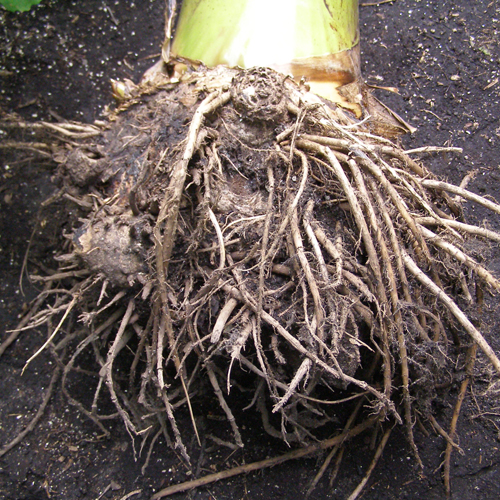Root System
Plants have numerous (200–500) fibrous roots. This is consistant with Bananas being Monocots.In well drained, deep, and fertile soils, roots may extend 1.5 m (5 ft) deep and 4.9 m (16 ft) wide. the root system of the banana tree provides structure and the ability for absorption of water. The root system of banana plants begins as a single rhizome that puts out suckers, which form new plants to replace the dying main plant after it fruits.
Since the Cavendish Banana is of the seedless variety, it means that that the new banana trees are created using the rhizomes that develop into new banana trees.
Shoot System
The entire above-ground portion of the plant is not a true woody trunk, as in other trees, but a “false trunk” or “false stem” that consists of leaves and their fused petiole bases, referred to as a pseudostem. The pseudostem supports a canopy consisting of 6–20 (or more) leaves.
Fruit
The most iconic fruit of the banana tree is a yellow slighty curved banana. They are generally elongate-cylindrical, straight to strongly curved, 3–40 cm (1.2–16 in) long, and 2–8 cm (0.8–3 in) in diameter. The fruit apex is important in variety identification; it may be tapered, rounded, or blunt. The skin is thin and tender to thick and leathery, and silver, yellow, green, or red in color.
Inside the ripe fruit, the flesh ranges from starchy to sweet, and in color from white, cream, yellow, or yellow-orange to orange. Bananas also vary in peel thickness. Some varieties have a thin peel and are more susceptible to damage in transport, whereas others have a comparably thicker peel (Big Mike variety). Fruits of cultivated Musa species are typically sterile or have extremely low fertility. They produce fruit pulp without pollination and fruits lacking seed.


We are provide all types of banana corm in all states in cheap rates pls contact 7708086106
ReplyDelete